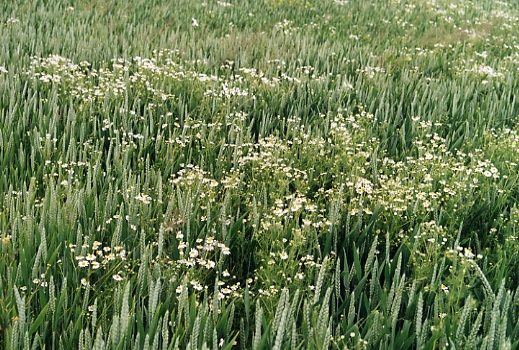Key features of broad-leaved weeds
- Broad-leaved weeds are dicots meaning that each seed initially contains two embryonic leaves (cotyledons).
- Often have wide, elongated oval leaves (nearly always wider than grasses) and branched stems.
- Net-liked or branched appearance of leaf veins.
- Many broad-leaved weeds (e.g poppy) have colourful flowers.
- Seeds are often more persistent in soils than grass weeds.
Despite some key biological similarities, this a diverse group of plants with varying growth habits, ecologies and life-cycles (can be annuals, biennials, perennials). This can make management of broad-leaved weeds challenging.
Management Options
The main management options for broad-leaved weeds tends to fall into cultural and chemical (herbicide) control.
Cultural
- A wide range of cultural control techniques can be employed specific to the targeted weed. This may include using optimal rotations, tillage and cultivations, suitable crop row spacing, using competitive crop varieties/cultivars and altering key timings (e.g drilling dates).
- The aim is to have optimal field conditions that make it more challenging for weed population establishment and growth.
Chemical
- A wide range of pre-emergence and post-emergence herbicides can be used on broad-leaved weeds - most commonly this includes ALS inhibitors (e.g sulfonylureas) (HRAC Group 2) although resistance concerns with this group means alternatives are becoming in greater demand.
- Unlike grass-weeds, broad-leaved weeds are generally naturally tolerant to ACCase enzymes (HRAC Group 1).
- Common post-emergence herbicides include HRAC Group 4 Auxin mimics (2,4-D and MCPA, dicamba, dichlorprop).
- Common pre-emergence herbicides include: HRAC Group 3 inhibition of microtubule assembly (pendimethalin, dithiopyr, prodiamine), HRAC Group 9 inhibition of EPSP synthase (glyphosate)
Herbicide Resistance
- Resistance to ALS inhibiting herbicides herbicides has been recorded in many UK broad-leaf weed populations
- There has also been an incidence of resistance of Groundsel to triazinone herbicides (HRAC group 5 Photosystem II inhibitors)
- This appears to be target site rather than enhanced metabolism (which is common in grass-weeds)
- Glyphosate resistance risk should be continually monitored
Please attach any relevant projects or pages linking to broad-leaved weeds to this topic page






